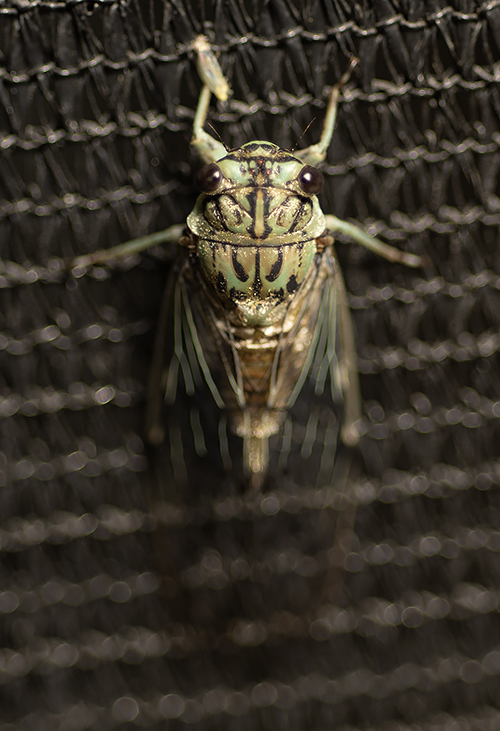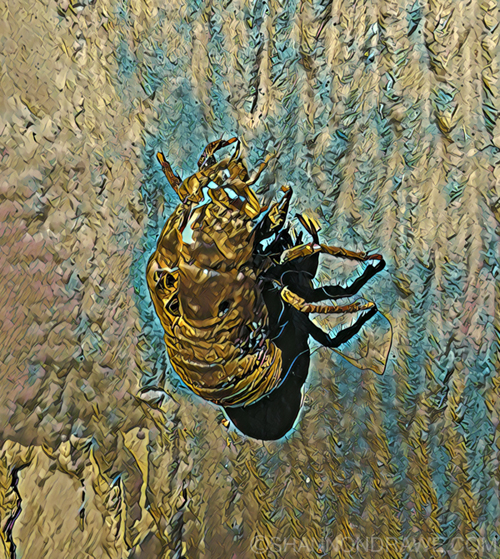
Cicada Double Shot This Spring
Get Your Fly Tying Vises Out For The Great Hatch
Once upon a time, in the vast landscapes of the United States, a fascinating natural phenomenon known as the Great Cicada Hatch unfolded. This unique event occurred in cycles, with two distinct species of cicadas emerging from the depths of the earth, filling the air with their rhythmic and enchanting symphony.

The story begins with Brood X, a remarkable group of cicadas that emerges once every 17 years. This particular brood, also known as the Great Eastern Brood, captivated the attention of entomologists and nature enthusiasts alike. As the soil temperature reached a specific threshold, billions of cicada nymphs dug their way to the surface, ready to embark on their short-lived but intense adult lives.
Brood X, with its red-eyed magicicadas, painted the landscape in the eastern parts of the United States with a sea of buzzing wings and distinctive calls. From the woodlands of the Midwest to the coastal regions of the East Coast, the cicadas created a natural spectacle that left communities in awe.
Not long after Brood X’s grand appearance, another wave of cicadas, known as Brood XIII, emerged. This group, with a 13-year cycle, filled the air with its own unique chorus. Brood XIII made its presence known in the central and southern regions of the United States, covering states like Illinois, Missouri, and parts of the Southeast.
The simultaneous emergence of Brood X and Brood XIII created a symphony of cicada sounds that echoed through the trees and resonated across the nation. The air hummed with the vibrations of countless cicada wings, as if nature itself was orchestrating a grand concert.
Curious crowds gathered in parks, forests, and neighborhoods to witness this extraordinary natural event. Children marveled at the winged insects, collecting exoskeletons as souvenirs, while scientists studied the phenomenon to better understand the ecological impact of these periodic cicada hatches.
The cicadas, oblivious to the human fascination they generated, went about their brief but intense mating rituals. The females laid their eggs in the branches of trees, ensuring the cycle would continue with the next generation of nymphs burrowing underground.
As the weeks passed, the symphony of cicadas gradually faded away. The once-thriving populations of Brood X and Brood XIII reached the end of their adult lives, leaving behind a landscape transformed by their presence. The nymphs, now buried beneath the soil, awaited the passage of time until their next grand emergence.
And so, the story of the two cicada hatches in the United States became a chapter in the ever-evolving narrative of nature’s wonders. The memories of the buzzing choruses, the vibrant red-eyed cicadas, and the sense of awe lingered in the hearts of those fortunate enough to witness the Great Cicada Hatch—a testament to the cyclical beauty that nature bestows upon the world.
Synchronized Emergence of Brood X and Brood XIII: A Phenomenal Dual Cicada Hatch in the United States
THE SCIENCE OF IT ALL
The year 2024 marks a rare and extraordinary natural event in the United States—the simultaneous emergence of two distinct cicada broods, Brood X and Brood XIII. This scientific article delves into the historical context, geographical distribution, and ecological significance of this synchronized cicada phenomenon, shedding light on the intricate cycles of these fascinating insects.
INTRODUCTION
Cicadas, known for their periodic and synchronized life cycles, have long fascinated entomologists and nature enthusiasts. This year, the convergence of Brood X (17-year cycle) and Brood XIII (13-year cycle) has presented a unique opportunity to study the simultaneous emergence of these two broods and explore the ecological implications of this event.
HISTORICAL CONTEXT
Brood X, also known as the Great Eastern Brood, has a remarkable 17-year life cycle. The last emergence of Brood X occurred in [previous emergence year], making the current event a momentous occasion for researchers and observers. Similarly, Brood XIII, with its 13-year cycle, last emerged in [previous emergence year]. The synchronous appearance of these broods is a rare phenomenon, occurring approximately every 221 years, providing scientists with a valuable opportunity to study their interactions and ecological impacts.
GEOGRAPICAL DISTRIBUTION
Brood X is predominantly found in the eastern parts of the United States, covering states such as Indiana, Ohio, Pennsylvania, and parts of the Mid-Atlantic region. The emergence of Brood X creates a spectacle in woodlands, parks, and suburban areas, captivating the attention of local communities. On the other hand, Brood XIII emerges in central and southern states, including Illinois, Missouri, and portions of the Southeast.
The overlap of these geographical ranges has led to a unique scenario where certain regions, such as the Midwest and parts of the East Coast, experience the simultaneous emergence of both broods. Researchers are closely monitoring these areas to understand how the interactions between the two cicada populations may influence their respective ecological roles and behaviors.
ECOLOGICAL SIGNIFICANCE
Cicadas play a crucial role in ecosystems, particularly in nutrient cycling and tree health. The synchronized emergence of Brood X and Brood XIII presents an opportunity to study their impact on local flora and fauna. Researchers are investigating how the increased abundance of cicadas may influence predator-prey relationships, plant growth, and nutrient cycling in affected ecosystems.
OBSERVATIONS and RESEARCH OPPORTUNITIES
Citizen scientists and researchers alike are actively documenting the synchronized emergence, contributing valuable data on the distribution, behavior, and abundance of Brood X and Brood XIII. The utilization of citizen science initiatives, coupled with advanced monitoring technologies, allows for a comprehensive understanding of this rare phenomenon.
CONCLUSION
The simultaneous emergence of Brood X and Brood XIII in the United States this year offers a unique and unparalleled opportunity to study the ecological dynamics of these remarkable insects. As researchers continue to document and analyze the event, the findings are expected to enhance our understanding of cicada biology, ecology, and their role in shaping diverse ecosystems.
Thanks to all of you who post on the internet. The ChatBot hooked a ton of data and stories to write this one! It took about, oh, 30-seconds. The future is so bright, or is it?

You must be logged in to post a comment.